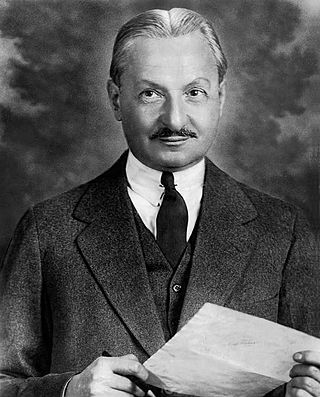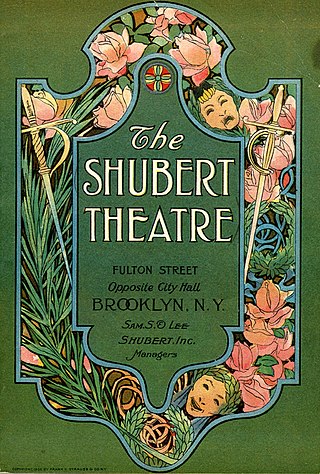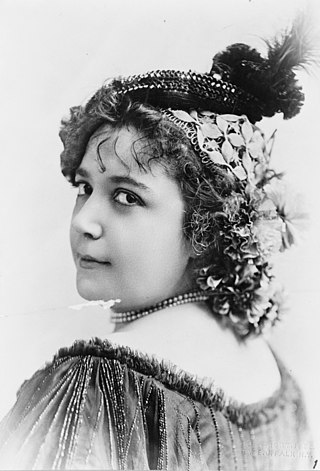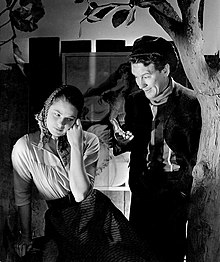
Adolph Green was an American lyricist and playwright who, with long-time collaborator Betty Comden, penned the screenplays and songs for some of the most beloved musicals on Broadway and in Hollywood. Although they were not a romantic couple, they shared a unique comic genius and sophisticated wit that enabled them to forge a six-decade-long partnership. They received numerous accolades including four Tony Awards and nominations for two Academy Awards and a Grammy Award. Green was inducted into the Songwriters Hall of Fame in 1980 and American Theatre Hall of Fame in 1981. Comden and Green received the Kennedy Center Honor in 1991.

Dorothy Fields was an American librettist and lyricist. She wrote over 400 songs for Broadway musicals and films. Her best-known pieces include "The Way You Look Tonight" (1936), "A Fine Romance" (1936), "On the Sunny Side of the Street" (1930), "Don't Blame Me" (1948), "Pick Yourself Up" (1936), "I'm in the Mood for Love" (1935), "You Couldn't Be Cuter" (1938) and "Big Spender" (1966). Throughout her career, she collaborated with various influential figures in the American musical theater, including Jerome Kern, Cy Coleman, Irving Berlin, and Jimmy McHugh. Along with Ann Ronell, Dana Suesse, Bernice Petkere, and Kay Swift, she was one of the first successful Tin Pan Alley and Hollywood female songwriters.

Florenz Edward Ziegfeld Jr. was an American Broadway impresario, notable for his series of theatrical revues, the Ziegfeld Follies (1907–1931), inspired by the Folies Bergère of Paris. He also produced the musical Show Boat. He was known as the "glorifier of the American girl". Ziegfeld is a member of the American Theater Hall of Fame.

The Winter Garden Theatre is a Broadway theatre at 1634 Broadway in the Midtown Manhattan neighborhood of New York City. Originally designed by architect William Albert Swasey, it opened in 1911. The Winter Garden's current design dates to 1922, when it was completely remodeled by Herbert J. Krapp. Due to the size of its auditorium, stage, and backstage facilities, it is favored for large musical productions. It has 1,600 seats and is operated by The Shubert Organization. The auditorium interior is a New York City landmark.

The Shubert Organization is a theatrical producing organization and a major owner of theatres based in Manhattan, New York City. It was founded by the three Shubert brothers in the late 19th century. They steadily expanded, owning many theaters in New York and across the United States. Since then it has gone through changes of ownership, but it is still a major theater chain.

Lew Fields was an American actor, comedian, vaudeville star, theatre manager, and producer. He was part of a comedy duo with Joe Weber. He also produced shows on his own and starred in comedy films.
The Shubert family was responsible for the establishment of the Broadway district, in New York City, as the hub of the theatre industry in the United States. They dominated the legitimate theater and vaudeville in the first half of the 20th century, promoting entertainment attuned to popular taste.

Samuel S. Shubert was an American producer and theatre owner/operator. He was the middle son in the Shubert family and was raised in Syracuse, New York.

Fay Templeton was an American actress, singer, songwriter, and comedian.

The Shubert Theatre is a Broadway theater at 225 West 44th Street in the Theater District of Midtown Manhattan in New York City. Opened in 1913, the theater was designed by Henry Beaumont Herts in the Italian Renaissance style and was built for the Shubert brothers. Lee and J. J. Shubert had named the theater in memory of their brother Sam S. Shubert, who died in an accident several years before the theater's opening. It has 1,502 seats across three levels and is operated by The Shubert Organization. The facade and interior are New York City landmarks.

The Booth Theatre is a Broadway theater at 222 West 45th Street in the Theater District of Midtown Manhattan in New York City. Opened in 1913, the theater was designed by Henry Beaumont Herts in the Italian Renaissance style and was built for the Shubert brothers. The venue was originally operated by Winthrop Ames, who named it for 19th-century American actor Edwin Booth. It has 800 seats across two levels and is operated by The Shubert Organization. The facade and parts of the interior are New York City landmarks.

Stage Door Canteen is a 1943 American World War II film with musical numbers and other entertainment interspersed with dramatic scenes by a largely unknown cast. The film was produced by Sol Lesser's Principal Artists Productions and directed by Frank Borzage. The film features many celebrity cameo appearances but primarily relates a simple drama set in the famed New York City restaurant and nightclub for American and Allied servicemen. Six bands are featured. The score and the original song, "We Mustn't Say Goodbye", were nominated for Academy Awards.

Joseph Morris Weber was an American vaudeville performer who, along with Lew Fields, formed the comedy double-act of Weber and Fields.

Louis Mann was an American theatre actor and sometime director, who in his later life made a few appearances in motion pictures. He was married to actress and playwright Clara Lipman.

John Lionel Golden was an American actor, songwriter, author, and theatrical producer. As a songwriter, he is best-known as lyricist for "Poor Butterfly" (1916). He produced many Broadway shows and four films.

Vera Michelena was an American actress, contralto prima donna and dancer who appeared in light opera, musical comedy, vaudeville and silent film. She was perhaps best remembered for her starring roles in the musicals The Princess Chic, Flo Flo and The Waltz Dream, her rendition of the vampire dance in the musical Take It from Me and as a Ziegfeld Follies performer.

The Anco Cinema was a former Broadway theatre turned cinema at 254 West 42nd Street, between 7th and 8th Avenues in Manhattan, New York City. It opened in 1904 and was originally named the Lew Fields Theatre. It continued to operate as a playhouse under various names until it was converted into a movie theatre in 1930. Its block was famous for its concentration of Broadway theatres turned cinemas. After World War II, the street declined and the Anco Cinema eventually became a pornography venue. It closed as a cinema in 1988 and was gutted for retail use. The building was demolished in 1997.

The Sam H. Harris Theatre, originally the Candler Theatre, was a theater within the Candler Building, at 226 West 42nd Street, in the Theater District of Midtown Manhattan in New York City. Opened in 1914, the 1,200-seat theater was designed by Thomas W. Lamb and built for Asa Griggs Candler, who leased it to George M. Cohan, Sam H. Harris, and George Kleine. Although the theater was intended to host both movies and legitimate Broadway productions, it functioned exclusively as a movie theater after 1933. The theater's auditorium was demolished by 1998. The only remnant of the former theater is its 42nd Street facade, which has been used by the Madame Tussauds New York museum since 2000.
Weber and Fields' Broadway Music Hall, sometimes simplified to Weber and Fields' Music Hall, was a Broadway theatre located in Manhattan on 29th Street near the corner of 29th and Broadway going towards Sixth Avenue. It was the resident theatre of comedy duo Joe Weber and Lew Fields from 1896 through 1904; with the pair starring in numerous original high energy musical farces mounted at that theatre.





















